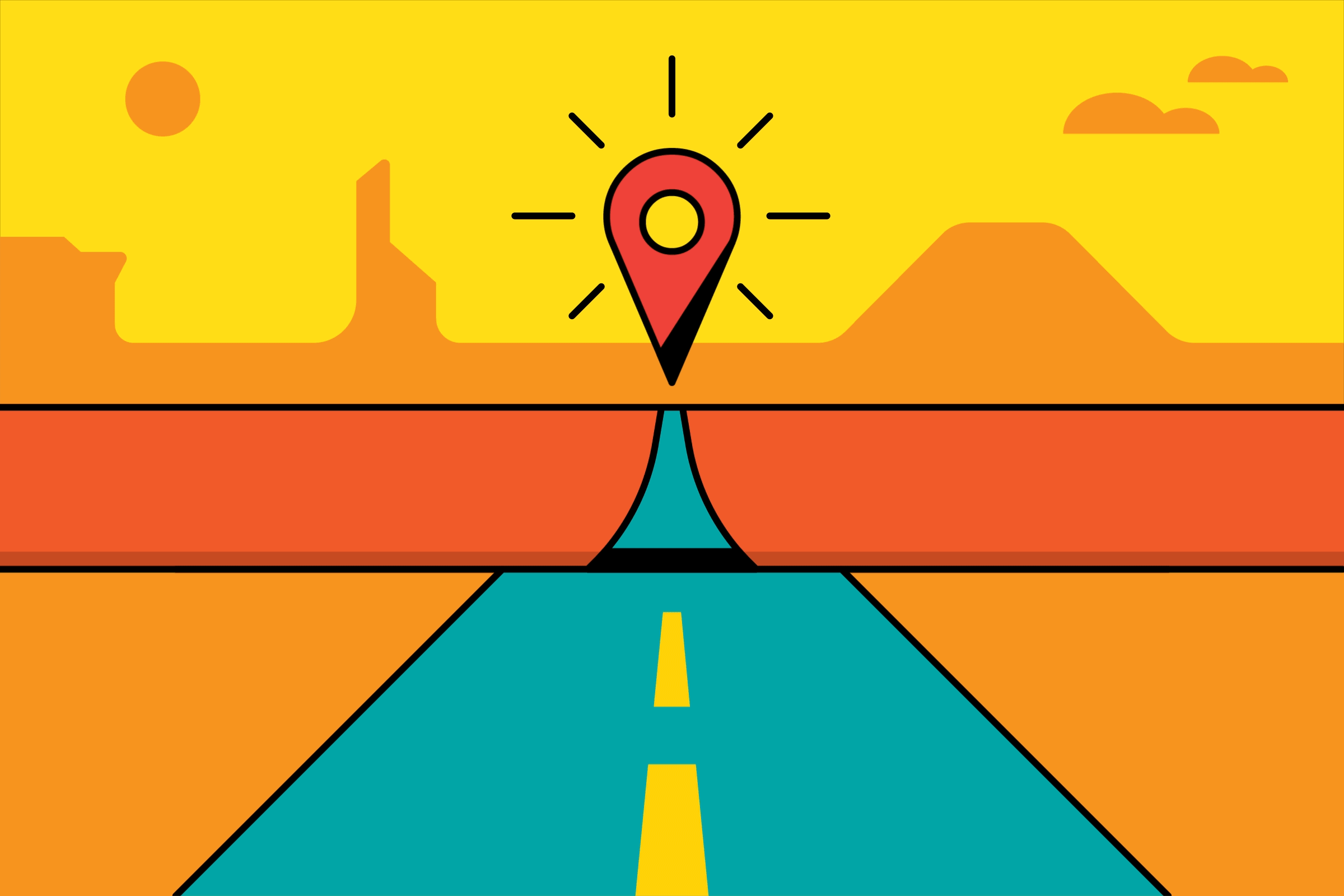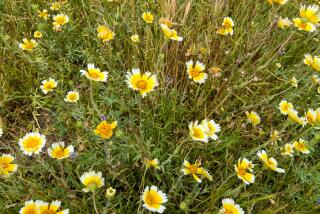Mount Rushmore, Black Hills provide South Dakota’s view for the ages
MOUNT RUSHMORE, S.D. — As fall begins, the light is as golden as the prairie. The sky is big and blue. This year, with lots of rain, the hills of ponderosa pines undulate in a deep, thick green carpet so solid that the hills really do look black.
One can see why American Indians revere this land so, and why a sculptor spent 14 years hanging off the edge of a cliff to chisel its fine granite.
The Black Hills shout of the vibrant West.
And whisper of a far older past.
Of the 2.2 million visitors that Mount Rushmore gets each year, I’d guess about 2.1 million of them zoom up, spend a couple of hours, then speed off. That is such a mistake.
Why? This region where the West and Midwest collide has a rich cultural texture and an eternity’s worth of sweeping scenery, far more than just a mountain with four heads. (And by the way, if those heads could talk they would back me up on this they’ve been gazing at the scenery for 73 years and have, oh, about 7.2 million more years before eroding, geologists say.)
I spent five days in this southwest corner of South Dakota, and I have to say I will add it to my unexpected favorite travel spots, along with Memphis, Mexico City and Krakow, Poland.
The Black Hills, like those places, delivers more than promised.
So let me do a little rundown on my personal highlights, and you can then make your own trip.
Mount Rushmore National Memorial: You see the throngs of tourists snapping away on their cameras as they get a first glimpse of the famous sight in person. But walk closer. And closer. And closer. A nice, wide pavilion gives you the classic view.
Take the Presidential Trail and you’ll get so close you can look up the nostrils of the 60-foot-high sculptures of Presidents Washington, Lincoln and Jefferson and Teddy Roosevelt. Visit sculptor Gutzon Borglum’s studio and a museum that tells the story of how Mount. Rushmore was built between 1927 and 1941 with ingenuity and pure muscle.
Skip the evening illumination ceremony, which is basically just a long video with a few patriotic songs thrown in and a white light shining on the heads.
Keystone: For two days, I based myself in Keystone, a tourist town two miles from the memorial. Keystone is an old mining town that struck it rich with the incoming tourist throngs of Mount Rushmore, but it retains its rough, Western personality.
I took the 1880 Train, a steam train between Keystone and Hill City. I ate buffalo stew at the Ruby House Restaurant, with its lush red flocked wallpaper and rifles on the walls. I breathed the clear, high air in the 4,500-foot altitude. From my hotel room window at the K Bar S Lodge I could see the profile of George Washington at Mount Rushmore.
Crazy Horse Memorial: A must-see to complement Mount Rushmore 17 miles away. In 1948 sculptor Korczak Ziolkowski (and eventually his wife and 10 children) began a sculpture taller than the pyramids of Egypt to honor the Oglala Lakota warrior.
Now that the 87-foot-high head is finally finished, you can easily imagine how the entire completed sculpture will amaze folks long after we’re dead and gone. Take the small bus tour as close as it can get to the fierce pink granite memorial. The site also has a nice American Indian museum and a good restaurant.
Needles Highway and the Iron Mountain Road, Custer State Park: From Crazy Horse I backtracked slightly and took the Needles Highway. It is not for the faint of heart. With switchbacks and drop-offs as it passes pointy spires of ancient granite, the 14-mile drive has vistas worth stopping for if only you can find a place to stop. At one point, a one-way tunnel blasted through the granite is barely 8 feet wide.
The Iron Mountain Road, connecting the heart of Custer State Park with Keystone, is more accessible and equally as charming. Each of its three tunnels frames a view of Mount Rushmore. It also has curlicue “pigtail” bridges that twist around to maximize the views on the 17-mile trip.
Both of these trails are partly inside Custer State Park and part of a scenic loop called the Peter Norbeck Scenic Byway.
Buffalo herd, Custer State Park: I spent two days at the classic State Game Lodge in Custer State Park, a 71,000-acre park that is the nation’s second-largest state park after the Adirondacks. The south part of the park is a vast prairie environment where 1,400 buffalo roam descendants of 38 buffalo rescued by conservationists that were turned loose here in 1914. You can drive yourself, but I took a Jeep safari that located several hundred animals still in mating season, with the bulls clumsily courting the lady buffaloes.
Vore Buffalo Jump: An hour west of Rapid City is Beulah, Wyo., and a significant archaeological site. In the 16th-18th centuries, before they had horses, Plains Indians hunted the buffalo on foot, where they were forced to jump down into the pit. There’s a brand new visitors center here.
You pass the interesting South Dakota towns of Sturgis and Deadwood, plus Spearfish Canyon, on the way to Beulah.
Rapid City: I flew in and out of the airport at South Dakota’s second largest city (population 70,000), which is just 22 miles from Mount Rushmore. Rapid City has trendy restaurants and bars, plus major souvenir shopping.
Rapid City like the whole trip was not at all what I expected. It was far better.
IF YOU GO
Mount Rushmore Memorial: $11 parking fee; the park is free; 1300 Highway 244, Keystone (www.nps.gov/moru, 605-574-2523).
Keystone: K Bar S Lodge ($119/night and up; https://www.kbarslodge.com, 866-522-7724); 1880 Train steam train tour, $28, $12 ages 3-12. Downtown Keystone (www.1880train.com, 605-574-2222).
Crazy Horse Memorial: 12151 Avenue of the Chiefs, Crazy Horse; $11 admission per person plus $4 if you want the up-close bus tour, highly recommended. Twice a year (certain dates in September and June) visitors can hike up onto the arm of Crazy Horse (www.crazyhorsememorial.org, 605-673-4681).
Custer State Park: Custer City; $15 entrance fee (www.custerstatepark.com, 605-255-4460). Free to drive the wildlife loop; a free Buffalo Roundup each September is open to the public, this year it’s Sept. 26. To reserve a lodge or cabin within the park, contact https://www.custerresorts.com, 888-875-0001. The State Game Lodge is on the high end ($150/night-up).
Vore Buffalo Jump: https://www.vorebuffalojump.org.
For more: Order a South Dakota vacation guide at https://www.travelsd.com, 800-732-5682. It comes with maps.
9 BLACK HILLS TIPS
Pick up local brochures in shops when you get there; many have coupons for discounts on attractions.
Don’t hike alone. Trails in Custer State Park not only can be steep, but you may meet a buffalo on the trail; also ticks, rattlesnakes, poison ivy.
No, your camper won’t fit on the Needles Highway. Hairpin turns are 280 degrees, plus one tunnel is only 8 feet, 4 inches wide and 12 feet high.
Unless you love motorcycles, don’t come during the annual Sturgis motorcycle rally. Sturgis is northwest of Rapid City. This year, 500,000 bikers showed up. Next year on the 75th anniversary they expect 1 million. Rally dates are Aug. 3-9, 2015, and Aug. 8-14, 2016.
Try the local beer; I like Canyon Cream Ale by Crow Peak in Spearfish.
Try at least one odd attraction. Mixed in with the grandeur are quirky attractions: panning for gold at the Big Thunder Gold Mine in Keystone, the free Dinosaur Park in Rapid City, the Black Hills Maze, Reptile Gardens.
Visit the “Dances With Wolves” movie set, Fort Hays near Rapid City. The entire film was made in South Dakota in 1989 at these buildings, in nearby Spearfish Canyon and north of Pierre on a buffalo ranch. Very enjoyable.
Gifts and souvenirs: Buy chunks of rose quartz, yellow lepidolite or other South Dakota minerals and rocks at the many rock shops; Black Hills gold jewelry; I liked the Prairie Edge Gallery in Rapid City.
Read before you come: “Crazy Horse: A Life” by Larry McMurtry (Penguin, $14.99).
(c)2014 Detroit Free Press
Visit the Detroit Free Press at https://www.freep.com
Distributed by MCT Information Services
PHOTOS (from MCT Photo Service, 312-222-4194): UST-MOUNTRUSHMORE
More to Read
Sign up for The Wild
We’ll help you find the best places to hike, bike and run, as well as the perfect silent spots for meditation and yoga.
You may occasionally receive promotional content from the Los Angeles Times.






